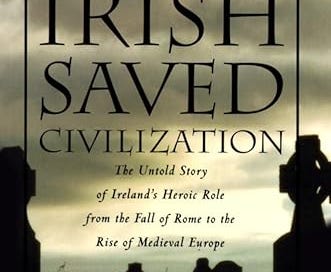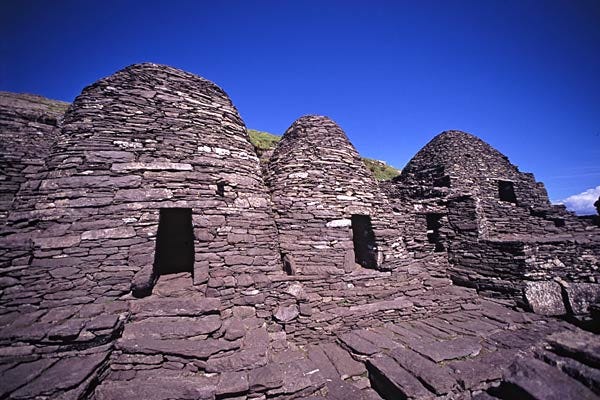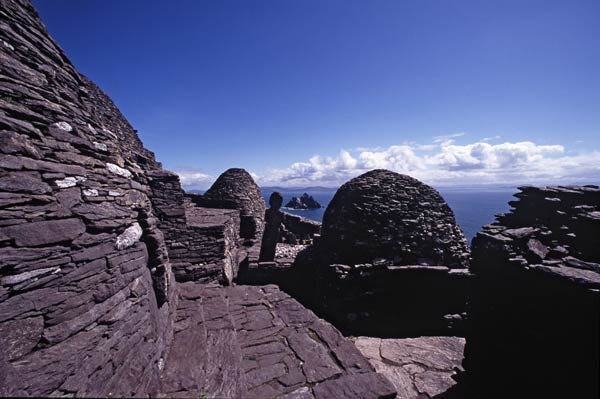How the Irish saved civilization
The untold story of Ireland's Heroic Role from the fall of Rome to the Rise of Medieval Europe
For months, an old book has been patiently waiting on my shelf - “ How the Irish Saved Civilization” by Thomas Cahill. This weekend, I did a speed read.
The book begins with the fall of Rome in the 5th century AD. As Roman civilization collapsed, libraries were destroyed, and literacy declined across Europe. Meanwhile, Ireland was never part of the Roman Empire and was transitioning from paganism to Christianity.
As the author says, the word Irish is seldom coupled with civilization. When we think of people as civilized, the Egyptians, Greeks, Italians, French, Chinese, and Jews may come to mind. The Irish are wild, feckless, and charming but not especially civilized. No image appears in our mind when we think of Irish civilization like those of the Greeks or Romans.
Yet Ireland, a little island at the edge of Europe, which had known neither Renaissance nor Enlightenment, had its moments of unblemished glory. As the Roman Empire fell and barbarians descended into Europe, the Irish took the mantle of Green Martyrdom. These Irish monks did something extraordinary when Europe descended into the Dark Ages. They didn't just preserve knowledge; they actively shared it. They traveled back to the European mainland, establishing monasteries and centers of learning across the continent. They became teachers and guardians of civilization at a time when learning was under threat.
Skellig Michael stands as a testament to the extraordinary dedication of Irish monasticism. This jagged pyramid of rock, reaching about 714 feet above sea level, housed one of the most remarkable and extreme monastic settlements in medieval Europe. The monks who established themselves there in the 6th or 7th century built incredible stone structures - beehive-shaped cells, oratories, and terraced gardens - all without mortar, using nothing but carefully fitted stones that have survived over a millennium of brutal Atlantic weather. It is now a UNESCO site heritage and after reading the book, I am quite keen to visit it soon.
What makes Skellig Michael particularly fascinating isn't just its architectural achievements but its role as a center of learning and spirituality. The monks who lived there demonstrated incredible resilience, surviving in harsh conditions where they had to haul supplies up 600 steep stone steps from the sea. Their dedication to preservation and learning influenced medieval scholarship in several ways. The monastery became a beacon of learning during the Dark Ages, preserving classical texts and developing new methods of study and meditation that would influence European monasticism.
The impact of their work was profound yet largely unsung for centuries. These monks preserved classical literature that might otherwise have vanished forever. Works of Virgil, Aristotle, and countless others survived because of their dedicated effort. It's a reminder that sometimes the most important work happens quietly, away from the spotlight.
The transformation started with St. Patrick, and his approach reminds me of the best kind of leadership I've witnessed in my career. Instead of imposing his ways, Patrick did something remarkable - he worked with the existing Irish culture. He didn't try to erase their traditions but rather wove Christianity into the fabric of Irish life. It's not unlike how great leaders adapt their approach to bring out the best in their teams rather than forcing rigid systems.
The Irish monks developed a unique system in their monasteries. The monasteries they established became centers of learning that eventually evolved into the European university system. It's remarkable how their influence continues to shape education today, creating a legacy that extends far beyond their time. Think about the typical university library today. Its fundamental organization - from cataloging systems to the very concept of open scholarship - bears the fingerprints of Irish monastic innovation. But let me break down how these medieval methods transformed into modern academic practices.
The Irish monks revolutionized reading itself. Before them, texts were written in scripture continua - continuous text without spaces or punctuation. The Irish introduced word separation and punctuation marks, making texts more accessible to learners. When I see myself reading , I think about how we owe this basic reading convenience to these innovative monks.
They also developed a sophisticated system of marginalia - those notes in the margins that academics and the workplace still use today. Their glosses (explanatory notes) were the forerunners of modern academic commentary and annotation. These weren't just scribbles; they were carefully structured systems of cross-referencing and interpretation.
The monastery schools established a teaching method we now take for granted - the tutorial system. One master works closely with a small group of students, encouraging questioning and discussion. This approach, first systematized in Irish monasteries, became the foundation of Oxford and Cambridge tutorial systems and influenced seminar-based teaching in Western civilizations.
Their contribution to manuscript organization was equally significant. They developed:
Page numbers
Chapter divisions
Tables of contents
Index systems
Cross-referencing methods
These might seem obvious today, but they were revolutionary innovations that made knowledge more accessible and organized in Western civilization.
Perhaps most significantly, the Irish monks established the concept of scriptoria as centers of focused study and writing. This model evolved into our modern research libraries and academic departments. Their emphasis on maintaining silence for concentration and providing proper lighting for detailed work influences library design even today.
The Irish approach to scholarship was uniquely inclusive. Unlike continental monasteries that often restricted knowledge to an elite few, Irish monasteries were more open to sharing their learning. This democratic approach to education influenced the later development of universities as places where knowledge should be accessible to qualified students regardless of background.
Their influence extends to modern academic disciplines as well. The monks' careful study of language and grammar laid the groundwork for modern linguistics. Their preservation and analysis of classical texts established principles of textual criticism still used by scholars today.
The methodology of critical thinking they employed was remarkable:
Close reading of texts
Comparative analysis
Systematic documentation
Collaborative scholarship
Teaching through questioning
In the end, the story of how the Irish saved western civilization isn't just about preserving books - it's about the power of dedicated effort and the importance of maintaining connections between past and future. It's about how seemingly peripheral players can become central to preserving what's valuable in human culture.
The story of the Irish monks remind us that true greatness often comes not from seeking recognition but from dedicated service to something larger than ourselves. Their story teaches us that the most meaningful work might not be the most visible and that commitment to purpose can create a lasting impact.







